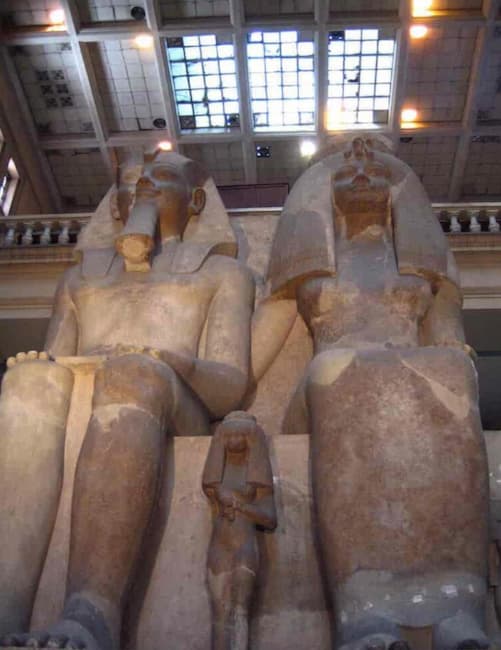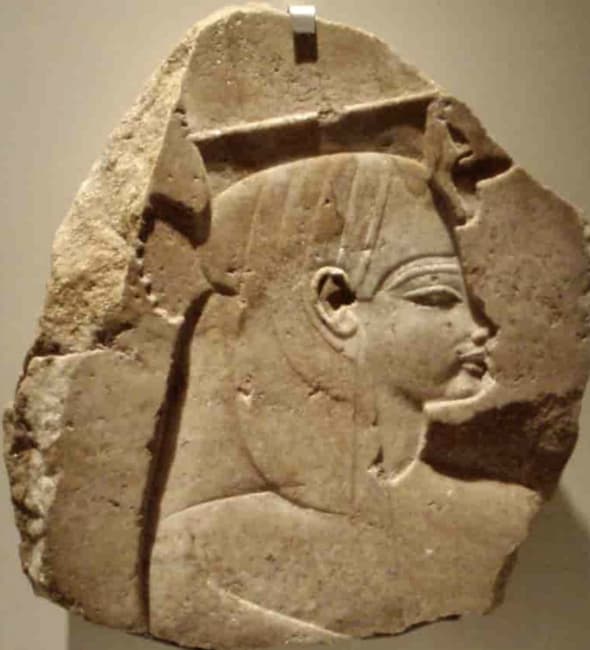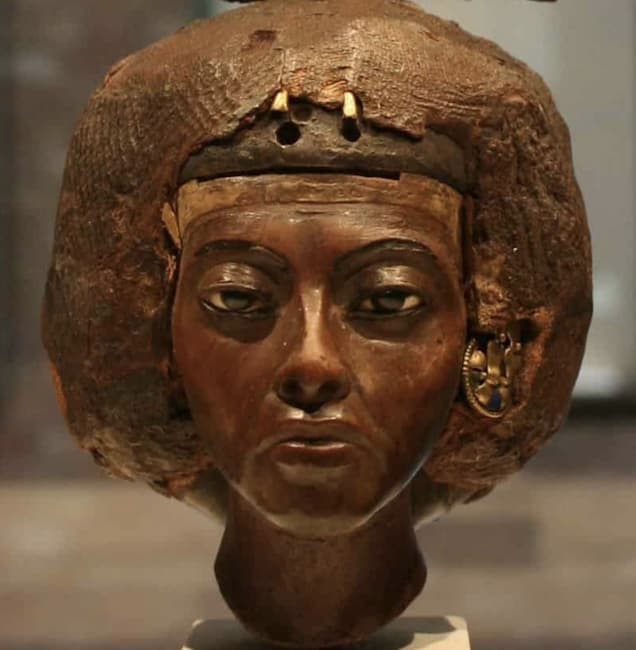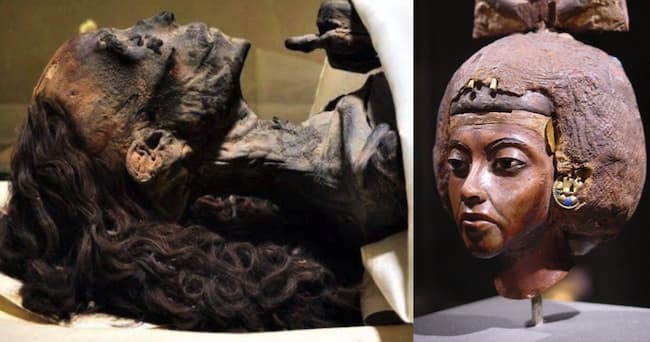Tiye was queen, wife of AmenH๏τep III, of the 18th Dynasty, and one of the most charismatic women in ancient Egyptian history. Other spellings of her name: Tiy, Tiya, Tiyi, Teje, Ty…

Unlike all her predecessors, the ” Great Royal Wives “, Tiye was not of royal lineage and never hid her noble origin, coming from the southern city of Akhmim.
Her father, Yuya , was a priest and superintendent of oxen or commander of the chariotry, while his mother, Tjuyu, held the тιтle of “Royal Ornament”, attributed to noble ladies at court, as well as “Singer of the temple of Amun”.

That the child-pharaoh AmenH๏τep III married Tiye instead of any of his numerous sisters, has no clear explanation, but could be due to:
When AmenH๏τep III assumed the throne he was still a child, and there was a Council of Regency dominated by the mother of the king, Mutemwiya.
This woman, despite having given birth to the successor, had not been the “Great Royal Wife” of Thutmose IV, and had to endure the rudeness of the other queens, who saw her as a secondary wife. Mutemwiya took revenge on them by denying the royal princesses marriage to the “new Horus “.
Yuya was a very important man in Egypt at the time, and it is likely that he was even the brother of the Queen Mother Mutemwiya.
Therefore, Tiye and AmenH๏τep III would have been cousins, and their marriage only ended up consecrating that ambitious lord.
To all this is added the conjecture that Lady Tjuyu, a pure-bred Egyptian, could be a descendant, by a secondary branch, of Ahmose-Nefertari, as some of her тιтles seem to indicate, so that Tiye’s candidacy was entirely legitimate.
Marrying Tiye to the pharaoh was a clever maneuver that benefited Yuya and Tjuyu in unusual ways.
Their power grew in line with that of the young kings, and they were even buried in the Valley of the Kings, an honor reserved for very few nobles.

His tomb was, along with that of Tutankhamun, found almost intact, with beautiful golden sarcophagi and the mummies in perfect condition.
The situation also benefited Tiye’s siblings. Anen, who continued to rise in the clergy of Amun, is known with certainty, and it is also possible that the new queen was a sister to the later Pharaoh Ay.
This well-versed man, a true political fox, would assume the role of Yuya alongside the king, and would wisely advise three kings before being himself, with his deft maneuvers, crowned.
Tiye married AmenH๏τep III at the age of eleven or twelve in the second year of his reign, being approximately two years younger than her holy husband.

The very young couple seemed to complement each other from the first moment and they never parted again. The influence that Tiye had on the pharaoh, never seen before in the “Two Lands”, is undeniable.
So much so that, on the occasion of their marriage, AmenH๏τep III sent scarabs to all the neighboring monarchs in which he announced the existence of his first Great Royal Wife, as well as that of the all-powerful Yuya and Tjuyu.
From that moment, and to everyone’s surprise, Queen Tiye did not stop appearing in all the monuments built by her husband, and in conditions almost on the same level as him.
The political weight of the young queen was enormous, and she had no qualms about handling AmenH๏τep III, who had the immense luck of enjoying a long and prosperous reign.
It is said that Tiye was the true ruler in the shadows, aided by her mother-in-law Mutemwiya and by the indolence of her husband.
One of the most problematic events of the reign of AmenH๏τep III is the role that the god Aten played in his 39 years of rule. Many have believed that this deity was introduced into the court by Tiye herself, but this is false, as there were already mentions of him under kings such as Hatshepsut or Thutmose IV.
What is certain is that under AmenH๏τep III and Tiye, Aten achieved a popularity among the royal family previously unthinkable.
The causes of this were above all the danger posed by the priests of Amun, so ambitious and powerful that they even made the throne shake.

